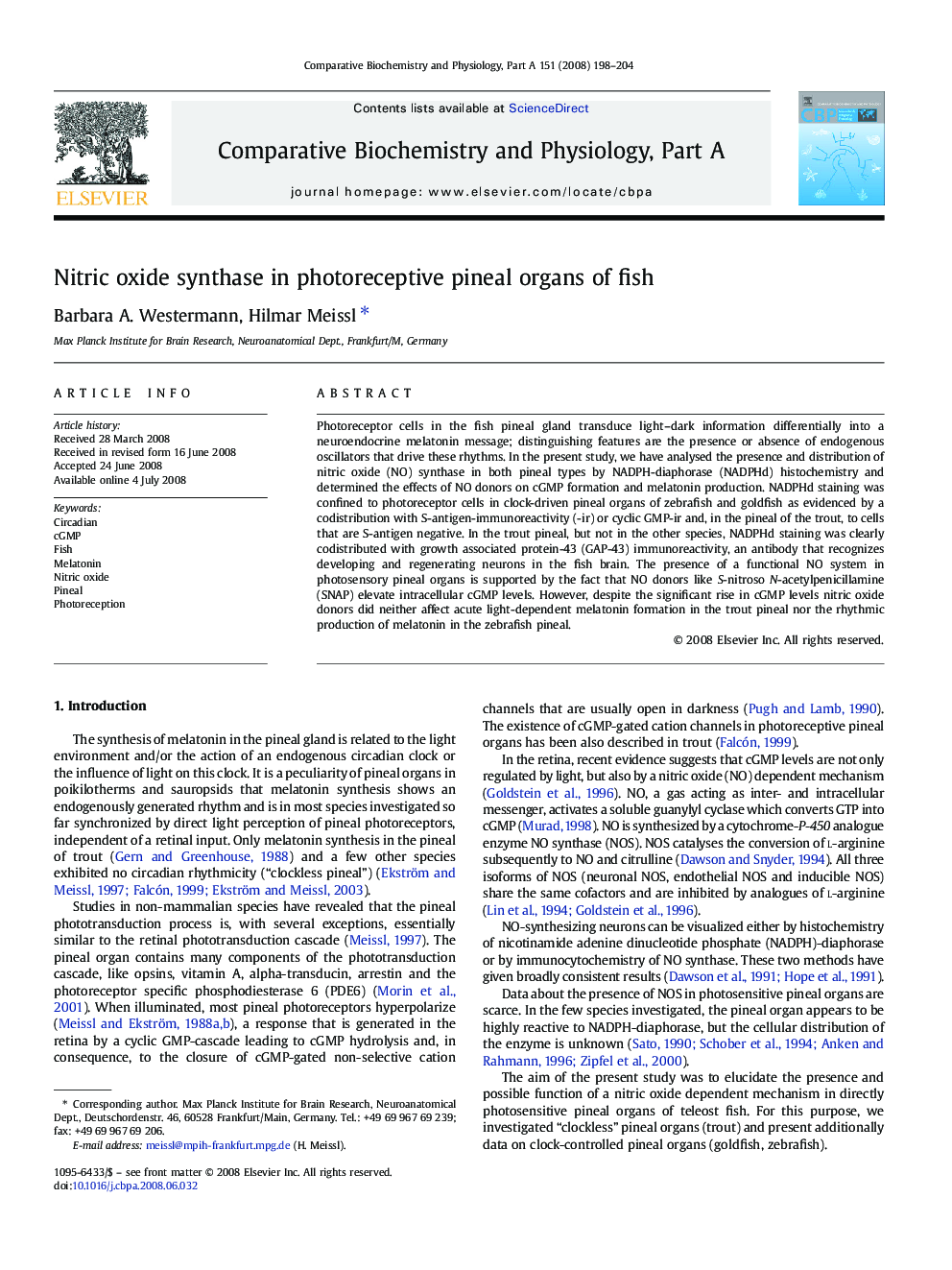| Article ID | Journal | Published Year | Pages | File Type |
|---|---|---|---|---|
| 1973824 | Comparative Biochemistry and Physiology Part A: Molecular & Integrative Physiology | 2008 | 7 Pages |
Photoreceptor cells in the fish pineal gland transduce light–dark information differentially into a neuroendocrine melatonin message; distinguishing features are the presence or absence of endogenous oscillators that drive these rhythms. In the present study, we have analysed the presence and distribution of nitric oxide (NO) synthase in both pineal types by NADPH-diaphorase (NADPHd) histochemistry and determined the effects of NO donors on cGMP formation and melatonin production. NADPHd staining was confined to photoreceptor cells in clock-driven pineal organs of zebrafish and goldfish as evidenced by a codistribution with S-antigen-immunoreactivity (-ir) or cyclic GMP-ir and, in the pineal of the trout, to cells that are S-antigen negative. In the trout pineal, but not in the other species, NADPHd staining was clearly codistributed with growth associated protein-43 (GAP-43) immunoreactivity, an antibody that recognizes developing and regenerating neurons in the fish brain. The presence of a functional NO system in photosensory pineal organs is supported by the fact that NO donors like S-nitroso N-acetylpenicillamine (SNAP) elevate intracellular cGMP levels. However, despite the significant rise in cGMP levels nitric oxide donors did neither affect acute light-dependent melatonin formation in the trout pineal nor the rhythmic production of melatonin in the zebrafish pineal.
